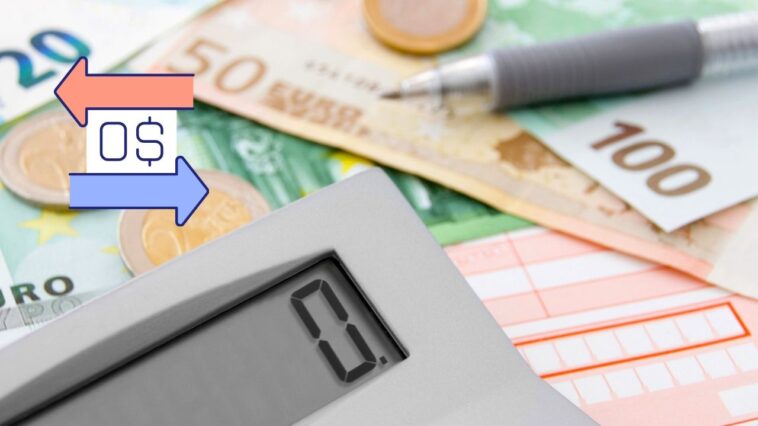Zero-based budgeting gives you much more control and transparency over your money than other ways to gain in financial planning. Zero-based budgeting is not the same as other kind of budgets where you take your last month expenses and assign a certain limit to each category with no logical reasoning behind it. Each dollar is assigned to a job — hence, the intentionality of such practice makes managing money that much easier and efficient. So with this article, we will look at what a zero-based budget is and its advantages as well how you can also set one up for yourself.
What is a Zero-Based Budget?
A zero-based budget is a type of budget where you assign every dollar in your paycheck to certain expenses, savings or any debt payments until the total amount left over after subtracting all your set spending from what you earned per month equals 0. The concept is that you assign each of your dollars a job, so there arent any excess funds just laying around for impulsive spending. It makes you think about all the money situations, and keeps you aware of what your dollars are being spent on.
Elements of a Zero-Based Budget
Earnings
Sum up the earnings you will receive monthly, it can be made of salaries, wages and side hustles all that is directed to your pocket.
Expenses
These are the ongoing costs that you have in your life like rent or mortgage, utilities, groceries, transportation cost insurance obligations and entertainment expenses.
Debt Repayment
You can use credit cards as well, student loans or car loan ect. that needs to be eliminated.
Savings and Investments
You should set aside a percentage of your income for savings, ie., an emergency fund or where you have long-term financial goals such as retirement, education.
Zero Base
At the end of budgeting, your total income — after all expenditures for saving (often a large share) and repaying debt should be zero. This does not mean you are literally spending all the money, but that every dollar has a place in your plan.
A Zero-Based Budget Has Several Benefits
There are several benefits that come with using a zero-based budget:
1. Greater Control Over Your Funds
A zero-based budget requires you to think carefully about how your hard-earned money should be used, making it impossible for you spend aimlessly and ensuring that every dollar spent is a reflection of what matters most financially.
2. Reduced Overspending
Because all of the dollars gets a job, there is no room for any extra, unplanned spending. This will reduce your impulse buying and prevent lifestyle inflation.
3. Improved Savings Rate
Through strategic planning and assigning every dollar an exact role to play in your life each month, a zero-based activity budget serves as the foundation for building financial strength and reaching money goals with greater ease.
4. Greater Financial Awareness
Commingling every dollar from money you made with your income brings a sense of awareness about how careless or faithful we are; to be able think on the state of where perhaps that could be cut back, re-directed.
How to Make a Zero-Based Budget
Step 1: Determine Your Total Monthly Income
Zero-Based Budget: Step 1 — Calculate Monthly Income Start off by reviewing how much your total monthly income is. Examples are all sources of revenue:
- Salary or wages from your job
- Gig work aka side hustle
- Rental income
- Other recurring sources of income
Be certain to figure in the net income (post-taxes) so you know exactly how much is at your disposal.
Step Two: Write Down All Of Your Recurring Monthly Bills
- List all of your monthly costs Fixed: These are your non-negotiables i.e. rent, utilitiesVariable: This term encompasses a range of different expenses
Fixed Expenses
Fixed expenses are things like rent, mortgage payments, insurance or subscriptions that do not change much month to month.
Flexible Expenses
Kind of goes hand in hand with variable expenses, essentially these are the costs that will differ month-to-month (think groceries, transportation utilities and fun things to do!)
Itemize costs: Itemizing expenses will help ensure every dollar is accounted for.
Step 3: Assignment of Funds to the Expense
Provide a dollar amount for each expense category based on your monthly income. For the likes of housing, utilities, groceries, and transportation should be filled in first followed by discretionary spending such as dining out entertainment or shopping.
Step 4: Cost Savings and Also Settling Personal Debt Planning
Devote some of your money to a savings and/or repayment plan. You might consider saving some of it an emergency fund, for retirement or education, and not touching the rest until you meet certain longer term objectives. If you owe money in the form of a debt, pay off your most expensive debts first as this will bring down overall cost due to interest.
Step 5: Make Your Budget Zero
Your budget should really line up to zero after everything is earmarked for bills, savings and debt. If you actually end up with some surplus dollars give that money a job, too — savings, debt reduction or put it toward a different goal entirely. If your spending is more than what you earn the only assistance really required for credit repair help happens to be financial counseling from established firms where professional tools are available such as a mortgage calculator.
Step 6: Monitor Your Spending During the Month
The thing with a budget is forming one; more importantly, it is adhering to that bill. Keep a running tally of our spending throughout the month to make confirm you are staying within those amounts for each category. Track Your Spending: Employ the use of budgeting apps, spreadsheets or just pen and paper to watch your spending; make reductions wherever possible.
Step 7: Monthly Budget Review and Revising It
Listen, zero-based budgets need to be constantly checked and updated. At the end of each month, determine how well your budget held up and where you over performed or under per formd Put this data to use and make some changes from the next month.
How to Keep Your Zero-Based Budget Going
Cash Envelopes
For categories in which you routinely go over budget, such as dining out or shopping. Take that much money in cash out of the budget and put it part in an envelope meant for that category. When the envelope is gone, you hit your allocation for that category this month.
Automate Your Savings
Put this on autopilot, schedule automatic transfers to your saving or investment accounts so that you portray a great saver before yourself each month.
Family Meetings
Where appropriate, you should involve your family or partner in the setting up of budgets. This builds in accountability and makes sure everyone is working towards the same financial goals.
Be Realistic
Ensure that your spending plan is based on the lifestyle you are accustomed to. Staying within your budget can be difficult if you create unnecessary boundaries.
Go with the Flow
We all know life can be surprising, and when it comes to unforeseen expenses. Things can happen and that budget will be fluid enough to make room for any unexpected changes.
Conclusion
Having a zero-based budget is an essential component of proper financial management, waste elimination and achieving your financial targets. When you assign every single dollar, it allows more regulation of your money higher savings percentages and cuts out the excess. If you track, review and adjust regularly than a zero based budget will give the strength to your financial foundation for secure future. Begin asap, and take charge of your monetary future.


